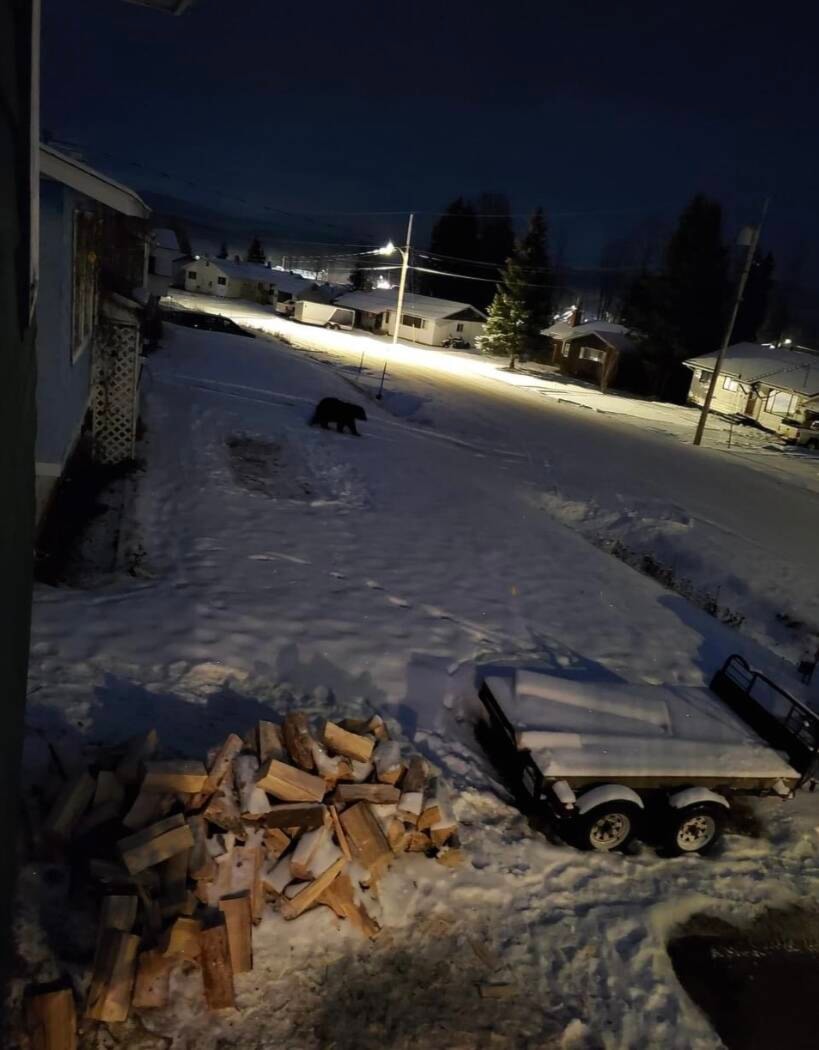On the ground, in the water, and through the air, the conservation officer (CO) Service is having a busy transition from fall into winter. Local CO Blake Knibbs is with the Nechako Lakes Zone unit. He said one of the key issues right now is still bears. Don’t be fooled by the snow on the ground.
“We still have a few bears kicking around, so make sure your garbage is secured,” he said. “The fruit is gone, now, but keep the garbage properly secured.”
Hibernation is not a complete coma. Bears will often step out of the den for a snack, even if they are sleeping most of the time. They come out even more if they aren’t in their deep winter phase.
“The thing about bears is, if they know they have a food source, they won’t actually hibernate,” Knibbs explained. “If their consistent food source is giving them more calories than they are losing from being out and about, they simply just won’t hibernate. That’s why securing attractants is such an important part of our job, because A) it’s public safety, but B) it is also making sure the bears are getting a fair shake at life.”
It has been “a pretty average year” for conflicts between humans and wildlife in this area, he said.
Conflicts between humans and COs has also been average. There have been some notable enforcement files started, but Knibbs was not at liberty to discuss them in detail, yet, as prosecution was still in early stages.
“There’s been everything from unlawful possession of wildlife, to having a firearm without a PAL [Possession and Acquisition License], which has been a somewhat frequent one, lots of cases.”
What occupies a large amount of CO service time lately, he said, is air quality situations.
“Lately there have been tonnes of fire files,” he said. “It’s people burning slash piles when the venting is poor. We’re trying to figure out a way to educate people. And it’s not just one person, we have a lot of cases of people burning when they’re not supposed to be. So we need to familiarize people with the open burning smoke control regulations.”
Slash pile fires must be no closer than 100 metres from any dwellings or buildings of value, and the venting must be fair to good, on the air quality index for that area, that day. Piles must also be stacked properly.
“A lot of people right now are using cats (bulldozers) and making big windrows,” Knibbs said. “Just by physics, if you have a taller pile (as opposed to a long windrow) it is going to burn a lot better. Make sure those piles are stacked properly: tall, not a snake-looking thing. And the wood has to be seasoned, right, so you’re not burning green wood. ”
Smoke enveloping a large area can be hard on residents with compromised breathing. Many have called in to complain when the weather was wrong for large fires. Venting conditions must be adhered to when starting a fire.
Open Smoke Burning Control Regulation, including smoke sensitivity zones and much more.
https://www2.gov.bc.ca/gov/content/environment/air-land-water/air/air-pollution/smoke-burning/regulations/openburningregula
Venting index, updated daily.
https://www.env.gov.bc.ca/epd/epdpa/venting/
